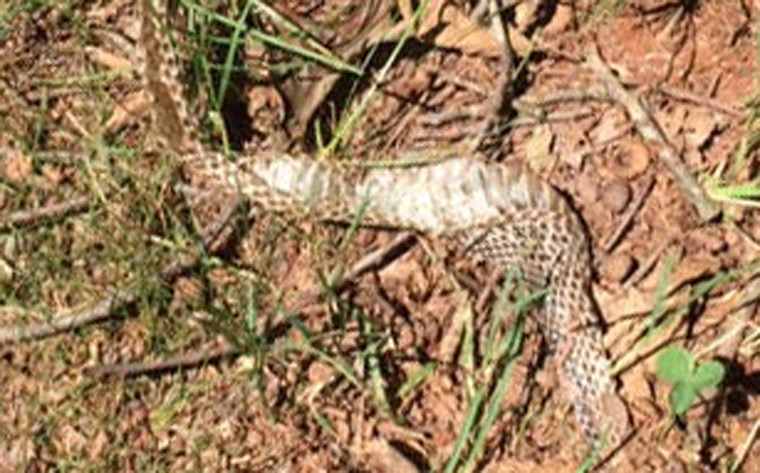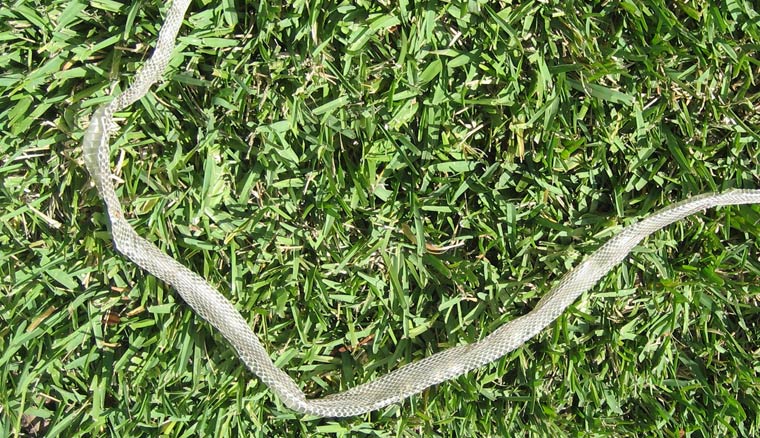-
info@aaanimalcontrol.com
Call us for help in your town
Humane Wildlife Education
How to identify a shed snake skin
Need snake removal in your hometown? We service over 500 USA locations! Click here to hire us in your town and check prices - updated for year 2020.
There may be nothing harder for a person to try to cope with then knowing that a potential predator or problem is around their home but not really knowing if it is a problem or not. That kind of cryptic opening really says that people are more inclined to get worked up about something when there is an unknown element about it.

For example, you come home and find that a window that you were sure that you closed is slightly open. You start to run through your mind whether you actually close the window or not, running all kinds of scenarios through your head as to whether someone has broken into your home or if there is someone waiting to attack you.
It is this kind of unknown that leaves people fearing what potential risks await them. This can happen when you head out into your yard and find that there is a snake skin that has been shed by one of these reptiles and is left inside your yard. You start to wonder what kind of snake that may be, and if it poses some kind of risk to you.
The best solution to this problem is to identify the kind of snake skin that you have discovered so you can alleviate that fear. However, you may have no idea how to do that. If you are looking how to identify a shed snakeskin, here are some important things to keep in mind.
First of all, before getting yourself worked up at all, what you should do is go online to see what kind of snakes are commonly found around the area where you live. Before you even need to identify the specific snake skin you are looking at, it is a good idea to know if there is anything for you to even be concerned about. This can alleviate your fears from the very start.
The next thing to look at is the actual length of the snake skin itself. If you are looking at a skin that is no more than maybe 20 inches long, then your concern about what kind of snake that may be should be greatly reduced. Most venomous snakes can reach to 5 or 6 feet, so a shorter length of skin means that you don't have a problem here at all.
What you want to look Is where the scales are on that skin. Scales are a huge indicator of what kind of snake you are talking about. While you can't get a real clear look of exactly how the scales look, primarily because you're just looking at a skin shell of the reptile, you can get a pretty good idea of the size, arrangement, and shape of the scales. Once you have been able to identify this, it is a good idea that you return to the Internet and put in the information that you have ascertained, because this will help you to determine what kind of snake you are looking at.
What does a snake skin look like? Where is it found?
Need snake removal in your hometown? We service over 500 USA locations! Click here to hire us in your town and check prices- updated for year 2020.
Snake skins generally look like … well, the skins of snakes. Imagine that the skin has just come off the snake whole, and that's about the right idea, although it is quite rare to find a shed skin that is in one piece. Only really healthy, happy and well-fed snakes do that these days, most of them too stressed to shed their skin in one load.

Snake skins, when they are not in one piece, can look like tiny pieces of plastic, with that familiar snakeskin pattern embedded into it. Smaller snakes can shed tiny pieces of skin, so small, in fact, that you might not even notice them as you go about your day. Larger snakes will have larger skins.
Snakes shed their skin as they grow. As the years go by and they eat more and more, they get bigger, and the old skin they had is no longer big enough to support the size of their body. They shed this skin, much in the same way that spiders shed their outer skin also, in order to make way for new skin. Humans do the same thing. We shed skin in the form of tiny skin cells, in order to make way for new, healthy and rejuvenated skin cells. That's just the way of the world — we shed, snakes shed, and even animals such as cats and dogs shed their thick, winter coats when the warmer weather starts coming around.
Snakes usually curl up somewhere hidden, comfortable and warm to shed their skin, and many of them don't eat for a long time beforehand, making them rather grumpy characters, should you come into contact with them. The chances of you finding an actual snake skin are quite small. Nature normally does its thing, disintegrating it or hiding it from view for long enough to see it fall apart entirely. In places where snakes are quite prolific, however, you may spot the skins if you look hard enough for them. Not that we would advise that, of course. It is quite difficult to tell, in some cases, whether or not a snake is venomous just by looking at it. All snakes, no matter how well-tempered they are, will attack and bite if they feel threatened or cornered.
Snake skin is often used to make items for fashion, including shoes, handbags, belts, hats, and more. These days, however, it is more considered to be an exotic item, and many animal welfare charities are calling for rate bigger labels to give up their love of cruel animal skinning practices.
You will generally find that the shed skin of a snake is actually much longer than the snake it once was home to, and that's because the skin actually covers both the top and the bottom of each scale on the snake. Essentially, there is close to twice as much skin as there is snake length, so even the longest of shed skins can come from the most unassuming of snakes.
For more information, you may want to click on one of these guides that I wrote:
How much does snake removal cost? - get the lowdown on prices.
How to get rid of snakes - my main snake removal info guide.
Example snake trapping photographs - get do-it-yourself ideas.
Snake job blog - learn from great examples of snake jobs I've done.


















